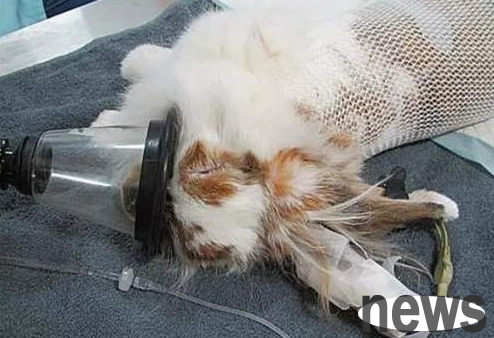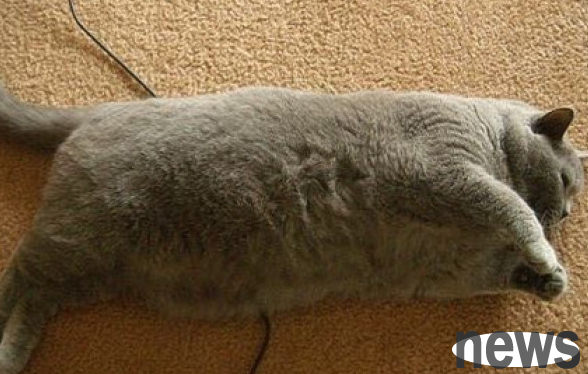What should I do if a cat has fatty liver? Drug treatment for cat fatty liver! Fatty liver is the most common disease in cat liver disease and one of the common clinical diseases. The direct cause of this disease is anorexia, and there are many causes of anorexia, including various diseases and stress. In recent years, with the use of nasogastric feeding tubes, gastric feeding tubes and esophageal feeding tubes, the cure rate of fatty liver in cats in mainland China has greatly increased. Feeding tube therapy is a nutritional treatment, but drug therapy cannot be ignored in the treatment of fatty liver.

The typical symptoms of fatty liver in cats are that they have not eaten food in recent times. If the cat is obese before starting to eat, the chance of fatty liver is very high. For cats that don't eat, the body will decompose fat to provide energy, but fat will accumulate rapidly in the liver, causing liver cells to be unable to utilize fat. Fat is stored around liver cells, leading to liver failure. Cats usually show jaundice, yellowing of the conjunctiva and skin. When jaundice occurs, if you do not actively treat it, it will often lead to death.
1. Multi-ion balance solution is usually used for liquid treatment. In severe fatty liver, the lactic acid concentration in a few cats is abnormally increased, which is suspected to be caused by lactic acid metabolism disorders. Therefore, it is recommended not to use Ringer's Lactate solution. Since glucose reduces the oxidation of fatty acids, increases the accumulation of triglycerides in the liver, worsens glucose intolerance, and can aggravate electrolyte disorders due to permeable diuresis, glucose is contraindicated.
2. Correct electrolyte disorders
Hypokalemia is very common in fatty liver and can significantly affect the cure rate. Hypokalemia is significantly related to symptoms such as drowsiness, anorexia, vomiting, decreased urine concentration ability, carbohydrate intolerance, poor ventilation, head and neck sagging, and hepatoencephalopathy. There is still no accurate formula for the amount of potassium ions required for computers, which are usually determined according to the concentration of potassium ions. The speed of potassium supplementation is very critical and must be less than 0.5mmol/kg/h. Sometimes hypophosphatemia and hypomagnesemia are also present. In severe cases, serious clinical symptoms can be caused and must be treated with targeted treatment.
3. Control of vomiting
Vomiting is one of the common symptoms in the treatment of fatty liver. This may be related to gastroparesis, electrolyte disorders, feeding tube irritation and underlying diseases caused by long-term intake of cats. The most commonly used drug to control vomiting is Gastrofuan, which has the function of inhibiting vomiting and promoting gastrointestinal motility. Due to the possible presence of gastroparesis, drugs such as atropine and 654-2 are prohibited. Sometimes Otansilon and Butorphino can be replaced. In addition, moderate exercise is also beneficial to the control of vomiting. When vomiting occurs, the feeding method can be changed to a small amount and multiple times, and the food is warmed by water bath. Due to vomiting, many veterinarians will reduce the number of feedings or reduce the amount of feeding. According to the author's experience, regardless of whether the feeding is reduced or not, the number of vomiting usually does not change significantly, and the number of feeding will significantly extend the cat's recovery time.
4. Appetite stimulators
Currently, there are many kinds of appetite stimulators in cats, including diazepam, cyproheptadine, etc. It is recommended to be used for cats that still have appetite, but cats without appetite are forbidden. Because calcification and cyproheptadine are usually ineffective in cats without appetite, but have severe hepatotoxic effects on individual cats.

5. Traditional Chinese medicine treatment
Bitter yellow has the effects of clearing heat and dampness, relieving liver and relieving depression, detoxifying, and lifting yang energy, and plays the role of protecting the liver and reducing enzymes and reducing yellowing.
VI. Other drugs
Other drugs that need to be supplemented include hepatocyte-promoting auxin, vitamin B (prone to deficiency in anorexia cats), vitamin E (antioxidative damage), vitamin K (used if necessary to treat poor coagulation), carnitine (promoting fatty acid oxidation), taurine (promoting deficiency in cats), adenosine methionine (antioxidative damage, synthetic carnitine and other functions).
7. Use drugs with caution
In this disease, there are more drugs with caution and contraindications. Stantazol, steroids and tetracycline all have the effects of promoting fat deposition; anticholinergic drugs can cause gastrointestinal retardation, which is not conducive to vomiting control. Vitamin K1, oxidative drugs, and propofol all have oxidative damage effects, which can easily cause anemia; appetite stimulators have hepatotoxic effects on a few cats.
8. Prognosis: The treatment of liver disease in cats usually takes 3-4 weeks, and a few cats take more than one month. Except for cases where the owner gave up treatment (cost factors, etc.), the cure rate of liver disease is extremely high (more than 95%). Since liver diseases such as fatty liver in most cats are secondary, whether cats can survive in the end is closely related to the primary disease.
